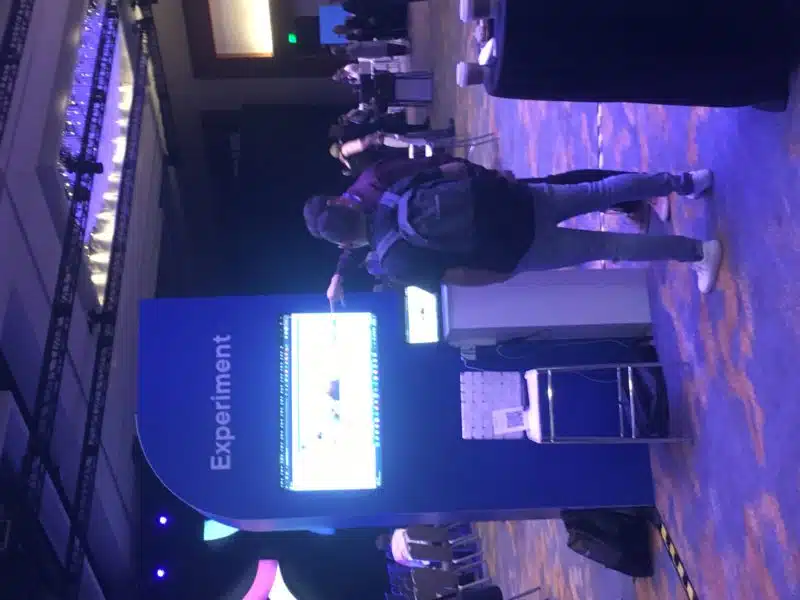Marketing collaboration and experimentation in action
Optimizely customers discuss how they are using the DXP's products at Opticon 2022.
At Optimizely’s Opticon 2022 conference, the lead theme was Boundless Digital Invention. That’s fine as a rallying cry, but what does it mean in practice, and how are brands executing on it?
The two chief supports for digital invention turned out to be collaboration and experimentation. Optimizely is known as an experimentation engine, with its Web Experimentation and Feature Experimentation (formerly Full Stack) products enabling rapid iteration of multivariate tests against select audience segments. The collaboration piece comes from Optimizely’s 2020 acquisition of Welcome (now Optimizely Content Management).
Welcome was created when NewsCred divested its content services business and rebranded as a content management solution. This solution provides an environment in which teams — and very large teams, as we’ll see — can collaborate on complex workflows and content creation. As a solution for marketers, it allows visibility into content and timelines for campaigns; but it’s not just for marketers. This is also where — as Optimizely advocates — product and engineering teams can collaborate, too.
On Welcome’s roadmap: adding experimentation workflows to the content workflows it already supports.

Shell: The heart of the digital eco-system. Shell adopted Welcome before its acquisition by Optimizely, and is its largest customer (the second largest is GE). Discussions began in 2018 and implementation in 2019. Michał Macherzyński, content management product owner at the oil giant, told us it took almost a year to adopt throughout the multinational, although the first users were onboarded within three months. The demonstrable time savings on products prompted wide buy-in.
In a presentation, he described Welcome as “the heart of the Shell brand digital ecosystem for all of our content marketing in Corporate Relations…” It’s serving a behemoth here, a company with 80,000 employees spread over 70 countries.
Shell uses Welcome for content planning, creative services and brand governance — it has even developed an automated feature to detect whether the Shell logo is correctly represented in content. It has moved Shell’s marketing teams from emails to a collaborative environment; provides information without team members needing to be chased for updates; deals with tens of thousands of approvals; allows collaboration with agencies and partners (roles can be customized); and provides visibility across campaigns in widely distributed locations.
Macherzyński has just five people on his team but did have the support of Accenture as an implementation partner. He also has access to continuous support at Optimizely. As you might expect, he has Welcome founder Shafqat Islam’s cell phone number.
Dig deeper: Enterprise digital experience platforms: A marketer’s guide
Star Tribune’s subscription success. At a somewhat smaller scale, Minnesota’s top newspaper, the Star Tribune, has been having success with Optimizely’s experimentation product. Harpreet Sandhawalia, director of digital product and analytics, comes with ten-plus years of experimentation experience and has been using Optimizely’s Web Experimentation product for six years (since before its acquisition by what was then Episerver).
What she describes as “data-driven, iterative experimentation” is directed at a key outcome for the business: maintaining or increasing subscriptions even as web traffic declines. She ascribes the current depression in traffic to “news fatigue.”
The Star Tribune hasn’t always been up to speed on this. In the past, it ran one experiment per month, and any changes recommended needed to be approved by a management council. Hardly agile. Sandhawalia instituted weekly ideation meetings, introduced segment-based experimentation around the paywall (segment example: “desktop social grazers”), and raised the cadence to 20 experiments over six months.
The result: a rise in subscription sales and purchases per session.
Why we care. The Boundless Digital Invention vision outlined at Optimizely’s conference might seem like something nice to aim at one day. Who wouldn’t want to reduce complexity, create content with confidence, and have a scientific basis for determining what works? And it’s surely no more than that for many smaller or less digitally mature brands (although Welcome has a free trial product and can be implemented incrementally).
That’s why it’s important to see it in action, both for a major global enterprise and for a regional media business, although of course a vendor conference will emphasize success stories. To be fair, Macherzyński and Islam did acknowledge mistakes in Shell’s Welcome implementation, like trying to onboard teams without looking at the collaborative connections; in effect, perpetuating siloes.
Among other customers reporting success, especially with the experimentation product: Zoom and Venmo. Siteimprove is a business that drives website improvement for its clients, with a mission-driven emphasis on accessibility. It’s own website was a mess. A full re-platforming on the Optimizely DXP left it accessible and optimized, said CMO Kevin Bobowski. He discovered that 90% of content was never found by Google. He reduced the number of pages by 75% while growing traffic 25%. Experimenting with personalization, he reduced LinkedIn spend by 75% while maintaining the same flow of leads (not such good news for LinkedIn).
Real-time segmentation. In final product news from the conference, Optimizely announced Real-Time Segmentation, promoting personalization at the moment of engagement. By using “fresh data” to personalize messaging, the aim is to eliminate stale attempts at engagement; for example, sending out a discount code after the customer has made a purchase. It’s currently in beta for selected customers.
Contributing authors are invited to create content for MarTech and are chosen for their expertise and contribution to the martech community. Our contributors work under the oversight of the editorial staff and contributions are checked for quality and relevance to our readers. MarTech is owned by Semrush. Contributor was not asked to make any direct or indirect mentions of Semrush. The opinions they express are their own.
Related stories
New on MarTech